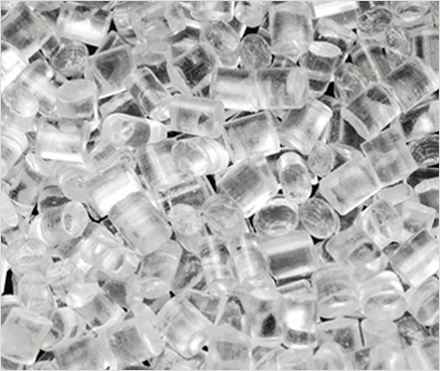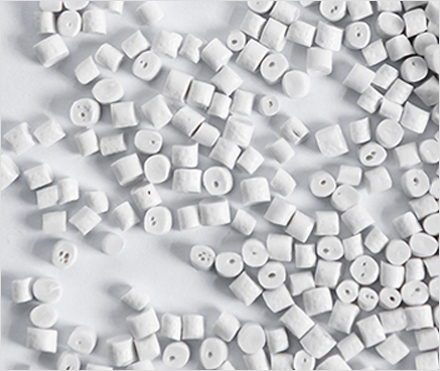When it comes to materials used in insulation, tubing, cable jackets, and various industrial applications, cross-linked polyolefin (XLPO) and cross-linked polyethylene (XLPE) are two commonly used options. Both materials offer excellent thermal, chemical, and mechanical properties, thanks to the cross-linking process, but they have notable differences that can affect performance and suitability depending on the application.
In this blog, we’ll explore the definitions, properties, manufacturing processes, advantages, and limitations of cross-linked polyolefin and cross-linked polyethylene to help you better understand their differences and how to choose between them.
Cross-linked polyolefin refers to a class of thermoplastic polymers—mainly polyethylene (PE) or polypropylene (PP)—that have undergone a cross-linking process. This process introduces chemical or physical bonds between polymer chains, enhancing heat resistance, mechanical strength, and chemical stability.
XLPO is often used in wire and cable insulation, automotive components, heat-shrink tubing, and industrial films due to its excellent flame retardance, low smoke emission, and ability to withstand higher temperatures.
Cross-linked polyethylene is a specific type of cross-linked polyolefin made only from polyethylene. Like XLPO, the cross-linking improves the material's thermal and mechanical performance. However, XLPE is generally more rigid and has better moisture resistance compared to XLPO, which makes it ideal for high-voltage cable insulation, plumbing pipes, and heating systems.
XLPE is available in various cross-linking types, including:
Peroxide (silane) cross-linking
Radiation cross-linking
Electron-beam cross-linking

ATP Polymer's Flame Retardant XLPE
Let’s dive deeper into the comparison between cross-linked polyolefin and cross-linked polyethylene based on several performance factors.
XLPO: Broad term for any cross-linked polyolefin, including polyethylene and polypropylene-based compounds. May include additives and flame retardants.
XLPE: Specifically refers to cross-linked polyethylene only.
| Feature | XLPO | XLPE |
| Base Resin | Polyethylene, Polypropylene | Polyethylene only |
| Additives | Flame retardants, stabilizers | Minimal or none |
| Custom Blends | Yes | Limited |
Chart 1: Material Composition
Both XLPO and material XLPE improve thermal resistance compared to their uncross-linked versions, but XLPO generally performs slightly better at higher temperatures, especially with added flame retardants.
| Property | XLPO | XLPE |
| Max Operating Temp (°C) | 125 – 150°C | 90 – 120°C |
| Thermal Aging Resistance | High | Moderate to High |
| Flame Retardant Option | Available | Limited |
Chart 2: Thermal Properties
XLPE tends to have higher mechanical strength and better dielectric properties, making it a preferred material for high-voltage insulation. XLPO is more flexible, with good tear and impact resistance, ideal for applications requiring frequent movement or vibration.
| Property | XLPO | XLPE |
| Flexibility | Higher | Moderate |
| Tensile Strength | Moderate | Higher |
| Dielectric Strength | Moderate | Excellent |
| Elongation | High | Moderate |
Chart 3: Mechanical and Electrical Properties
XLPE is more resistant to moisture and water absorption, making it better suited for underground or wet-location installations. XLPO performs well in chemical environments and can be formulated for enhanced resistance to oils and fuels.
| Property | XLPO | XLPE |
| Water Resistance | Good | Excellent |
| Oil/Chemical Resistance | Excellent (with additives) | Moderate |
| UV Resistance | Good (with stabilizers) | Fair |
Chart 4: Environmental Resistance
XLPO is generally more complex to produce due to its blend of polymers and flame-retardant additives. XLPE has a more straightforward manufacturing process, making it a cost-effective solution in many applications.
| Factor | XLPO | XLPE |
| Processing Complexity | High | Medium |
| Manufacturing Cost | Higher | Lower |
| Recyclability | Low | Low |
Chart 5: Processing and Cost

ATP Polymer's Tear Resistance XLPE
Cross-linked polyolefin (XLPO) and cross-linked polyethylene (XLPE) are widely used in electrical insulation and cable applications, but they shine in different areas. XLPO is commonly chosen for heat-shrink tubing and flame-retardant cable jackets due to its excellent thermal stability, low smoke emission, and halogen-free composition. These characteristics make it ideal for automotive wiring, public transportation systems, and environments where fire safety is a priority. Its flexibility and resistance to oils and chemicals also make it well-suited for automotive and industrial cable sheathing.
In contrast, XLPE excels in high-voltage and underground cable insulation because of its superior dielectric strength, moisture resistance, and long-term durability. It’s often the material of choice for power distribution networks, utility cables, and direct burial installations. XLPE maintains performance even in wet or chemically aggressive environments, ensuring the safety and reliability of electrical systems. While both materials offer strong performance, the choice between them depends on specific application demands like voltage, environmental exposure, and safety requirements.
| Application | XLPO | XLPE |
| Heat-shrink tubing | ✅ | ❌ |
| High-voltage cable insulation | ❌ | ✅ |
| Automotive wiring | ✅ | ✅ |
| Underground power cables | ❌ | ✅ |
| Flame-retardant cable jackets | ✅ | ❌ |
Chart 6: Applications Contrast
Choosing between XLPO and XLPE depends on your specific application needs. If you're looking for a material with excellent flame retardance, flexibility, and low smoke emission—especially for use in confined spaces or where fire safety is critical—XLPO is the better choice. It’s ideal for heat-shrink tubing, cable jackets in vehicles or buildings, and environments where chemical resistance and thermal stability are needed without sacrificing flexibility.
On the other hand, if your project involves high-voltage insulation, underground power transmission, or environments with moisture and mechanical stress, XLPE is the superior option. Its robust dielectric properties, long service life, and resistance to water make it perfect for utility cables and heavy-duty electrical applications.
